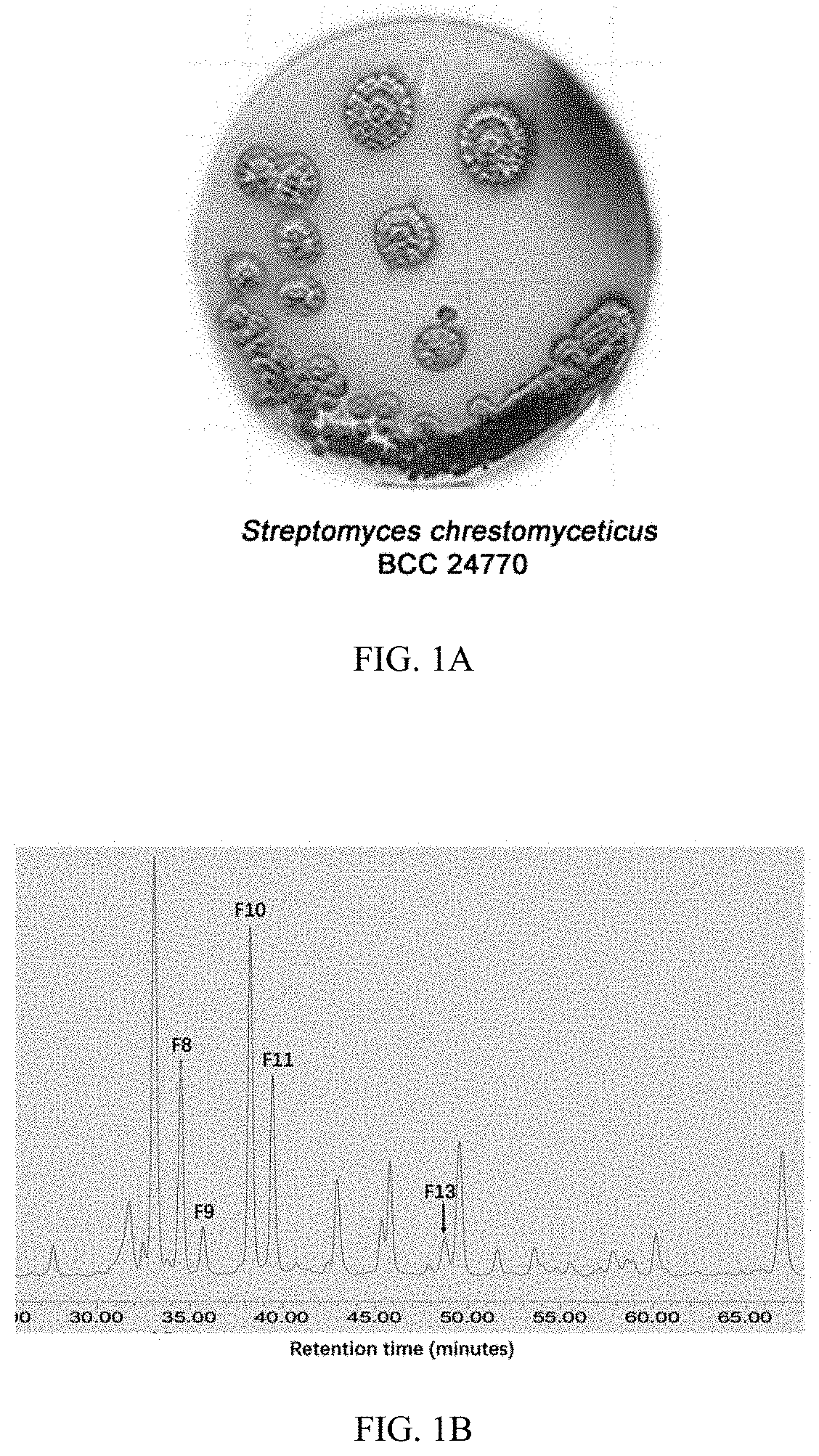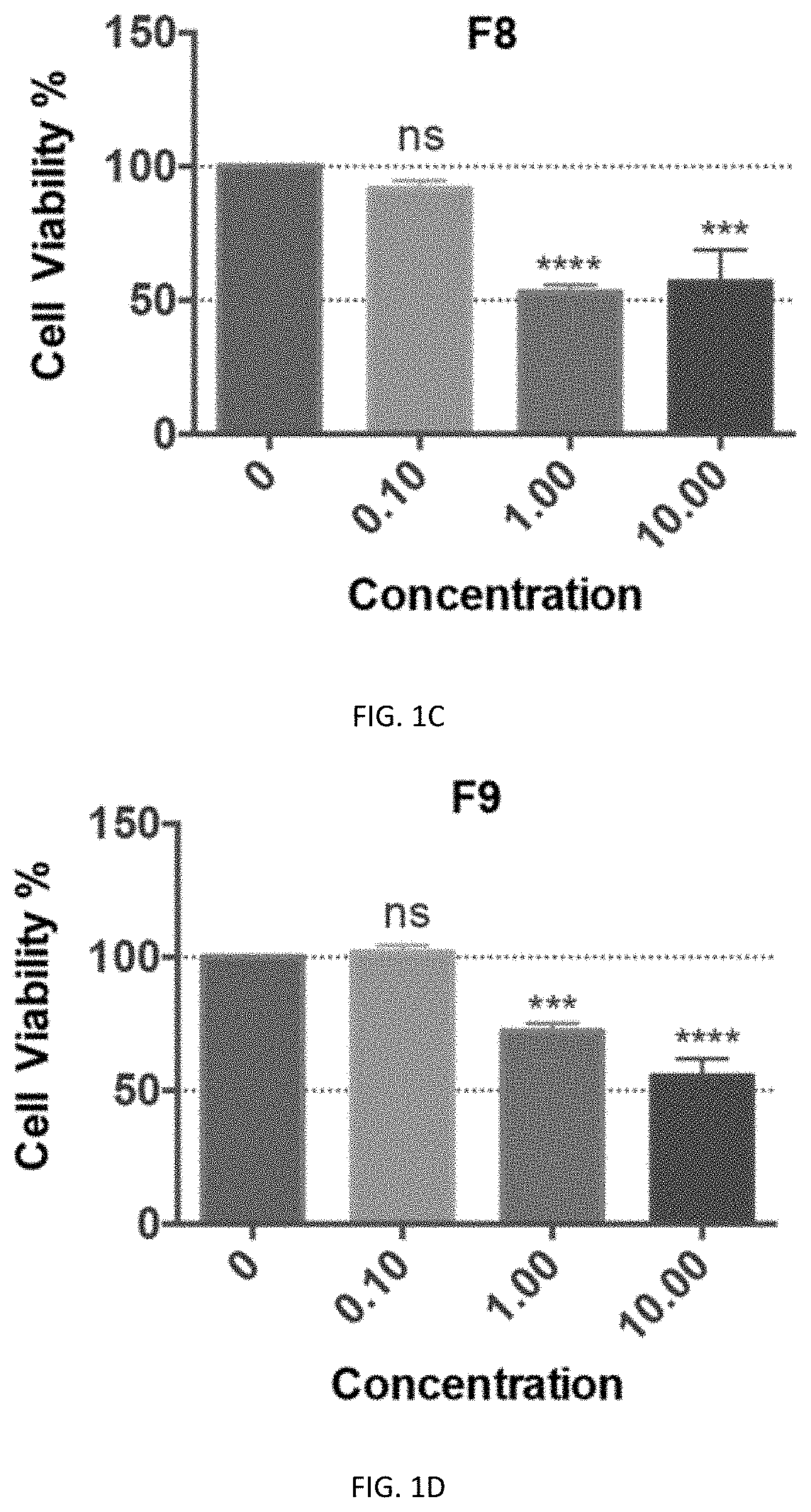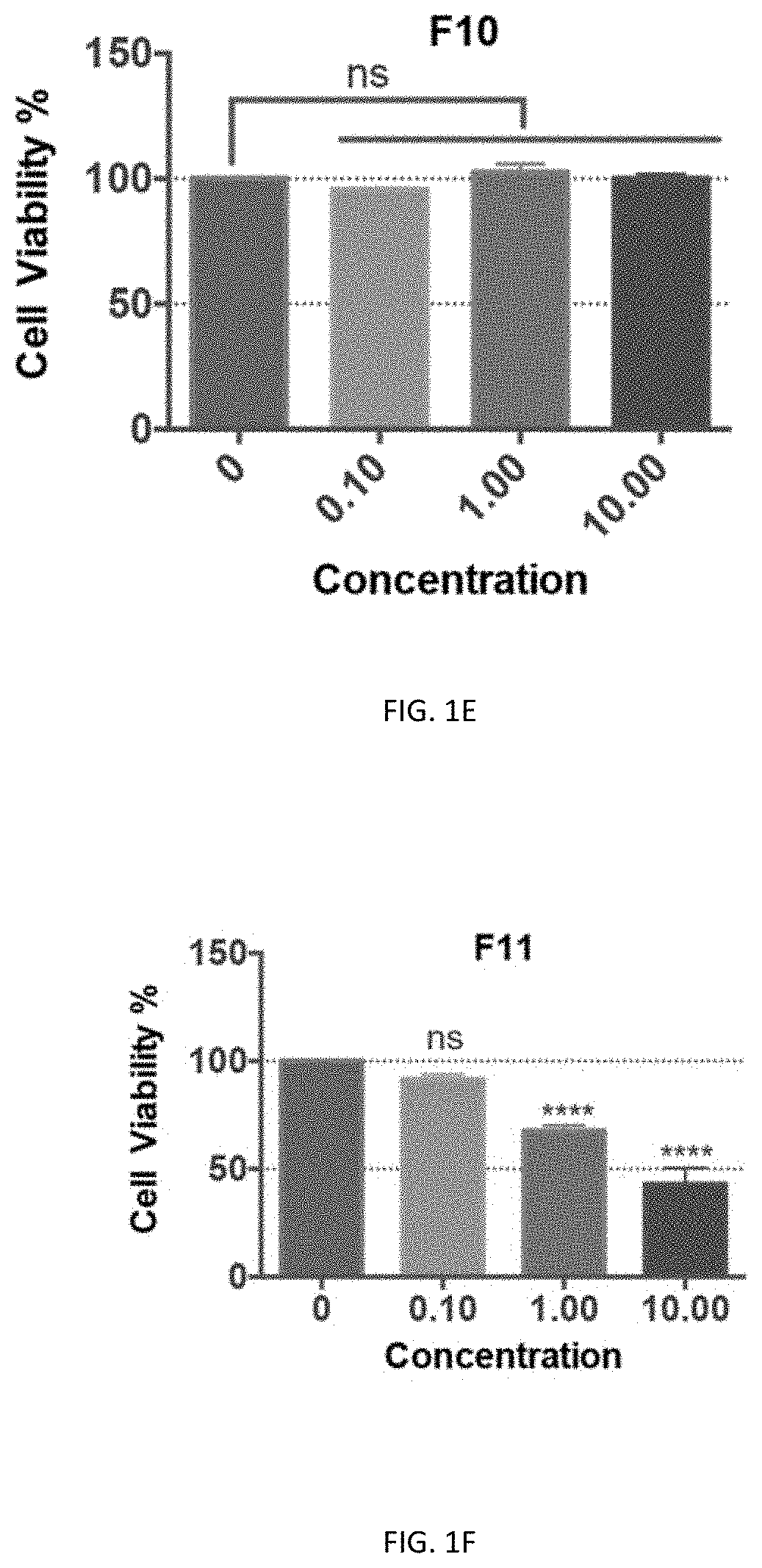Novel compounds as potential therapeutic agents targeting various neurodegenerative diseases
a neurodegenerative disease and potential therapeutic agent technology, applied in the field of novel compounds as potential therapeutic agents targeting various neurodegenerative diseases, can solve the problems of increasing patient numbers of neurodegenerative diseases, no effective drugs currently, and severe threats to human health, so as to reduce or eliminate tau fibrils, inhibit aberrant tau aggregation, and reduce the effect of tau fibrils
- Summary
- Abstract
- Description
- Claims
- Application Information
AI Technical Summary
Benefits of technology
Problems solved by technology
Method used
Image
Examples
example 1-preliminary
Screening and Neuroprotective Cell Modeling
[0139]Fractions F8, F9, F10, F11, and F13 were isolated from EtOAc extracted crude extract of bacteria strain Streptomyces chrestomyceticus BCC 24770 (FIG. 1A) for fermentation of 10 days in the GYM medium at 30° C. These fractions were selected based on their UV absorbance pattern and retention time on HPLC (FIG. 1B), which were predicted with novel chemical structures.
[0140]Preliminary cytotoxicity tests of F8, F9, F10, F11, and F13 were performed on the neuronal cell line-Neuro2a cells and HEK293T cells. Except for F10, all the other fractions showed cytotoxicity at 1 μg / ml in Neuro2A cells, and F13 even showed cytotoxicity at 0.1 μg / ml. In contrast, there was no cytotoxicity of F10 even at a high concentration of 10 μg / ml (FIGS. 1C-111). Similarly, F8, F9, F11, and F13 showed significant cytotoxicity at 10 μg / ml in the HEK293T cells, with which the cell viability was below 50% while with F10 treatment the viability of cells was close to...
example 2
ication of Compound Chrexanthomycin A (cA) and its Analogs
[0142]A pure fraction of F10 was enriched by semi-preparative HPLC (Flow rate: 3 mL min−1, Solution A: acetonitrile with 0.5% trifluoroacetic acid (TFA); solution B: Milli-Q water with 0.5% TFA. Acetonitrile concentration increased from 25% to 45% in 70 min. Retention time: 38.5 minutes), and we named this compound chrexanthomycin A (cA). cA was obtained as a yellow powder after freeze-drying the product from HPLC semi-preparation and its molecular weight was confirmed by High-resolution Mass Spectrometer as 621.1235 [M+H]+, calcd for C31H25O14. Its specific rotation was −49.8 using methanol as solvent at room temperature. UV (MeOH) λmax nm 224, 243, 271, 401. Similarly, cB, and cC were also obtained as yellow powder after freeze-drying the product from HPLC semi-preparation. The molecular weight of compounds cB and cC were confirmed using High-resolution Mass Spectrometer as 635.1387 [M+H]+, calcd for C32H27O14; 639.1332 [M+...
example 3
ture Elucidation of cA and its Analogs
[0145]For the structure elucidation of cA: three aromatic protons H6 (δH=7.97, 1H, dd, J=8.0, 1.5 Hz), H8 (δH=7.79, 1H, dd, J=8.0, 1.5 Hz), H7 (δH=7.38, 1H, t, J=8.0 Hz), were observed to have COSY correlations, as well as the HMBC correlations from H12 to C4 (δC=182.9) and C10 (δC=148.4), H7 to C5 (δC=122.7) and C9 (δC=146.4), and H8 (δH=7.79) to C6 and C10, indicates the presence of an aromatic ring connected with hydroxyls at C9 and C10, and a ketone at C5. The sugar moiety can also be determined through COSY and HMBC correlations. According to COSY correlations, H1′ (δH=5.82, 1H, d, J=5.5 Hz), H2′ (δH=4.16, 1H, dd, J=5.5, 4.7 Hz), H3′(δH=4.34, 1H, dd, J=4.7, 3.6 Hz), and H4′ (δH=6.23, 1H, d, J=3.6 Hz) strung together, together with the HMBC correlations from H1′ to C5′ (δC=142.2), H3′ to C5′ and H4′ to C6′(δC=165.1), we can confirm this is a 4′,5′-anhydroglucuronic acid moiety; Furthermore, the HMBC correlation from H1′ to C9 linked these tw...
PUM
| Property | Measurement | Unit |
|---|---|---|
| Temperature | aaaaa | aaaaa |
| Temperature | aaaaa | aaaaa |
| Temperature | aaaaa | aaaaa |
Abstract
Description
Claims
Application Information
 Login to View More
Login to View More - R&D
- Intellectual Property
- Life Sciences
- Materials
- Tech Scout
- Unparalleled Data Quality
- Higher Quality Content
- 60% Fewer Hallucinations
Browse by: Latest US Patents, China's latest patents, Technical Efficacy Thesaurus, Application Domain, Technology Topic, Popular Technical Reports.
© 2025 PatSnap. All rights reserved.Legal|Privacy policy|Modern Slavery Act Transparency Statement|Sitemap|About US| Contact US: help@patsnap.com



